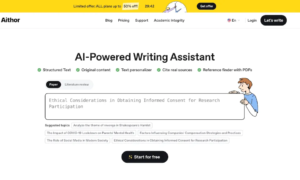Let’s face it—fonts are the unsung heroes of design. You might not give them much thought, but they can make or break your project faster than you can say “Comic Sans.” Whether you’re designing a website, a logo, or even a flyer for your cat’s birthday party, the right font sets the tone, grabs attention, and keeps people engaged. Fonts aren’t just letters—they’re the mood, the vibe, the personality of your design.
Think of fonts like outfits for your words. You wouldn’t wear a tuxedo to a beach party or flip-flops to a job interview, right? The same goes for typography. Picking the wrong font can confuse your audience or, worse, send them running. But don’t worry—you don’t need a degree in design to nail this. With a little guidance, you’ll be pairing fonts like a pro and making your designs as irresistible as a free pizza.
Why Good Fonts Matter In Design
Great fonts aren’t just eye candy; they’re the secret sauce behind a design’s effectiveness. According to gfx maker .com, a graphic design resource, they can either captivate your audience or send them running for the hills (possibly in Comic Sans).
Impact On User Experience
Fonts guide how users interact with your design. A poorly chosen font feels like a bad date—it’s awkward and frustrating. When fonts are legible and well-suited to the content, they create a smooth experience that keeps users engaged. For example, sans-serif fonts exude clarity, making them perfect for digital screens, while serif fonts lend sophistication to printed materials.
Conveying Brand Personality
Fonts have personalities, too. They can whisper “trust me,” scream “look at me!” or casually vibe “we’re cool.” A formal typeface like Times New Roman inspires professionalism, while playful fonts like Comic Neue add a touch of humor. The font you pick speaks volumes about your brand—just try representing a luxury brand with Papyrus and watch your audience cringe.
Enhancing Readability and Legibility
Readable fonts avoid confusing your audience. When you pick a font with a generous x-height and clean letterforms, you’re practically giving readers a mental high-five. Legibility ensures users can identify letters without squinting. Think of Arial or Open Sans for web designs—they keep things crisp and easy to digest. Pro tip: skip fonts that look like someone wrote them blindfolded.
Key Categories Of Fonts
Selecting the right font can feel like choosing the perfect pair of shoes—each type has its moment to shine. Here’s a breakdown of the main font categories to help you step confidently into your next design project.
Serif Fonts
Serif fonts are your design’s equivalent of a three-piece suit. With little “feet” at the ends of letters (yes, they’re fancy like that), these fonts scream tradition and elegance. Think of classics like Times New Roman or Georgia. They’re perfect for brands that want to appear authoritative, professional, or timeless. Use them for books, newspapers, or premium branding, and let their sophistication do the talking.
Sans Serif Fonts
Sans serif fonts are the cool, laid-back cousin of serif fonts. No extra strokes, no nonsense—just clean lines and modern vibes. Fonts like Helvetica, Roboto, and Calibri bring clarity and simplicity to the table. They’re digital rockstars, ideal for websites, apps, and companies that want to look approachable yet professional. Pair them with serif fonts for a classy yet contemporary feel, or let them stand alone for a minimalist look.
Script Fonts
Script fonts are your calligraphy-loving friend who nails every wedding invitation. Mimicking elegant handwriting, these fonts like Pacifico or Great Vibes instantly add a touch of formality and flair. While they’re perfect for special occasions and logos requiring sophistication, don’t overdo it—too many swirls can leave readers dizzy. Save them for headers or short text that needs to charm the audience.
Decorative Fonts
Decorative fonts are the party animals of the font family. Quirky, fun, and unapologetically unique, these fonts work best when originality and creativity matter most. Fancy a font that looks like it’s made of balloons, neon lights, or chalk? That’s decorative for you. Great for posters, playful brands, and anything offbeat, but use sparingly—too much decoration can feel like confetti got out of hand.
How To Choose The Right Fonts
Choosing the perfect font is like shopping for shoes—style matters, but comfort is non-negotiable. Nailing this step ensures your design speaks, well, the right language.
Define Your Design Goals
Start with clarity. Ask yourself what you’re trying to convey—corporate trust, playful whimsy, vintage chic? For instance, a law firm thrives on serif fonts dripping with authority, while a bakery wins hearts with handwritten scripts that scream delicious vibes. Knowing your goal avoids a “Comic Sans meets courtroom” disaster.
Consider Your Audience And Context
Your font vibes should match the audience’s expectations. A bold, futuristic sans-serif might dazzle tech geeks, but it’d confuse readers of a historical novel newsletter. Also, consider where your design will live—web, print, or both—to avoid fonts that look stellar online but turn into pixelated nightmares in print.
Understand Font Pairing Principles
Opposites often attract. Pairing fonts is like double-dating—your fonts must complement, not clash. If your main font is geometric and modern (e.g., Futura), pick a cozy serif to bring some balance. Avoid pairing two fonts that look like twins; it’s like wearing stripes with plaid—not in a good way.
Limit Your Font Choices To 2–3
Restraint is key. Stick to a maximum of three font styles to avoid a design that looks like it went rogue on a font buffet. Use one for headlines (bold and eye-catching), one for body text (simple and readable), and maybe a quirky decorative font for accents—if you’re feeling fancy.
Test For Readability Across Devices
Your font may crush it on a laptop but get squashed into obscurity on a smartphone. Test it on different screen sizes and print out a sample if necessary. If legibility takes a nosedive or the letters start looking like abstract art, it’s time to pick another font. Remember, reading shouldn’t feel like deciphering hieroglyphs.
Common Mistakes To Avoid
Even the best designs can fall flat when basic font mistakes sneak in. Learn what to avoid, and save your design from a one-way ticket to chaos.
Overusing Trending Fonts
Jumping on every font trend can backfire. Sure, trendy brush or calligraphy fonts are popular, but they’re not a free pass to ignore originality. Slapping the same overused script font all over your design won’t make it stand out; instead, it screams “template.” Use trending fonts sparingly, like sprinkling salt, and pair them with something timeless for balance.
Ignoring Contrast And Hierarchy
Using fonts that barely contrast is like whispering a speech nobody can hear. Pair fonts with noticeable differences, like a bold serif and a sleek sans serif, to highlight key sections. Failing to establish hierarchy confuses readers—it’s why your headline shouldn’t look like body text’s twin. Separating font roles creates a clear path for the eye to follow.
Overloading Designs With Too Many Fonts
No one wants to play “Font Bingo” while reading. Using more than 2-3 fonts in a single project overwhelms the design and makes it look cluttered. Imagine Helvetica, Arial, and Times New Roman fighting for space—it’s a font feud. Stick to a small, complementary font set to avoid visual anarchy.
Picking the right font is like finding the perfect pair of shoes—it’s gotta look good, feel right, and not make people cringe when they see it. Fonts aren’t just letters; they’re tiny design superheroes carrying your message in style. Treat them with the respect they deserve.
Remember, your font choices can make or break your design faster than you can say “Comic Sans.” So keep it classy, keep it readable, and for the love of design, don’t go wild with a font circus.
With a little thought and some solid font-picking skills, your designs can go from meh to marvelous. Now go forth and let your fonts do the talking—just make sure they’re saying the right thing.



































